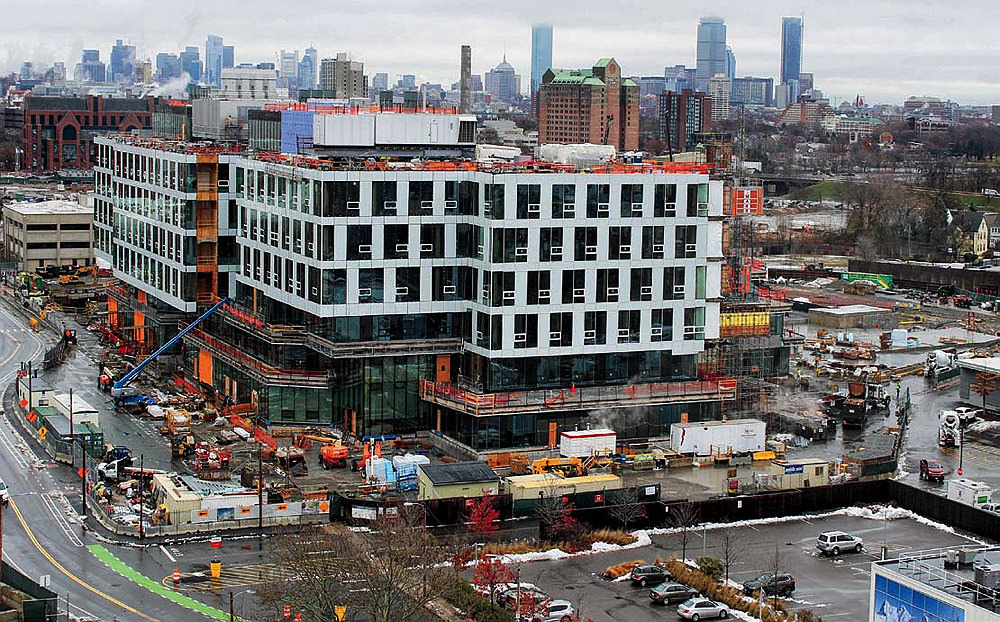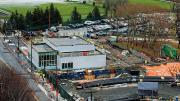Though attention rightly focuses on the engineering and applied sciences complex taking shape on Western Avenue, its smaller cousin, the 9,000-square-foot ArtLab maker space (sited around the corner, on North Harvard Street; see harvardmag.com/artlab-plans-17), is also well under way, as shown in these November views. As the fine print always cautions, these images are not to scale: the billion-dollar science facility appears below, and its humanistic neighbor—at roughly one-hundredth the investment—above. But as a harbinger of other potential arts and related facilities in the vicinity, the ArtLab looms large.

Photograph from the OxBlue Construction Cameras









